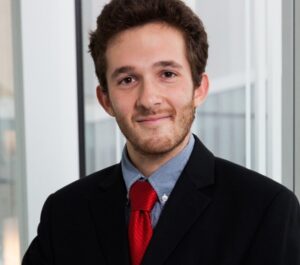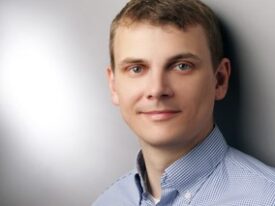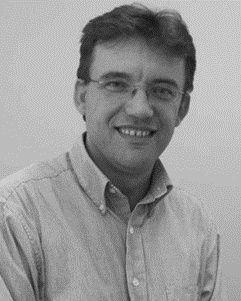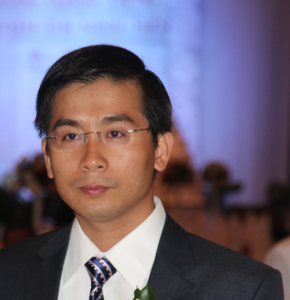This workshop is not accepting papers.
W8: Special workshop on digital twin-enabled industrial wireless control: communications, sensing and computation
Co-chair: Saeed Reza Khosravirad, Nokia Bell Labs, USA
Co-chair: Wanchun Liu, University of Sydney, Australia
Abstract:The next generation of wireless technologies envision digital twin of the industrial world as a core enabler. The digital twin helps visualize and orchestrate the operations of the communications, localization, sensing, and computation functions integrated with process monitoring and cloud-robotic control in real-time. A comprehensive sensing of the environment and localization of objects augments the rendering of digital twin, while time-critical applications are digitally visualized and remotely controlled using the real-time digital twin. Artificial intelligence (AI)-analytics and data processing in the edge cloud and ultra-reliable and dependable wireless communications are among the pillar technologies to enable such promise. Radio frequency (RF) sensing and localization together with other sensing technologies, including LiDAR and cameras create massive amounts of data that needs to be communicated reliably, processed efficiently, and analyzed using the power of artificial intelligence. User equipments (UEs) will wirelessly benefit from the computational power of the edge and central cloud, which also helps reduce the cost and complexity of the devices and bring scalability and efficiency to industrial manufacturing. Co-design of the communications, computation and control systems is going to play a key role in improving efficiency and availability. Significant challenges to deliver on these promises have attracted great interest in researchers in academia and industry. This special workshop will bring together some of the most renowned researchers in this field to share and discuss their state-of-the-art work and their visions for the future.
Program:
Program at a glance (TBD):
| Session 1 (9:00—10:30) | 9:00-9:20 | [Opening] Digital twin-enabled industrial wireless control: communications, sensing and computation
Saeed Khosravirad & Wanchun Liu |
| 9:20-9:40 | Mehdi Bennis | |
| 9:40-10:00 | Mark Eisen | |
| 10:00-10:20 | Matthew Andrews | |
| Session 2 (11:00—12:30) | 11:00-11:20 | Peter Rost |
| 11:20-11:40 | Thomas Scheiter | |
| 11:40-12:20 | Ahmed Alkhateeb | |
| Session 3 (14:00—15:30) | 14:00-14:20 | Andrea Conti |
| 14:20-14:40 | Trung Q. Duong | |
| Session 4 (16:00—17:30) |
Speakers:
Dr. Mehdi Bennis, Professor at the Centre for Wireless Communications, University of Oulu, Finland
Title: VisionX: Semantic Communication Meets System2 ML.
Abstract: This talk will first provide a brief introduction of VisionX sitting at the intersection of machine learning and communication in terms of enablers and mathematical tools, while contrasting it with current efforts in this area. Then, recent results in semantics-native communication and learning communication protocols from data will be presented.
Dr. Mark Eisen, Research scientist at Intel Labs in Hillsboro, OR, USA
Title: ML-Based Co-Design and Co-Simulation for industrial Control Systems
Abstract: Mobile multi-robot systems are an integral component of highly automated factories of the future. Since mobile robots have limited on-board computing capability and battery capacity, there is increasing interest in exploring approaches that enable robots to effectively leverage wireless communications and Edge Computing solutions for perception, navigation, planning, coordination, and control. It is, however, a major challenge achieving precision, high-speed, coordinated actions between robots due to tight end-to[1]end latency, and safety requirements, especially while enabling time-sensitive data exchange over wireless networks and execution of computing workloads distributed across robots and the Edge system. The traditional approach of designing compute, communications, and control components in an Edge system as independent components, limits the capacity and scalability of computing and wireless resources and is therefore unsuitable to meet performance guarantees for energy and resource-efficient time-sensitive robotic applications. In this talk, we discuss technical challenges in the context of two Edge Robotics use cases such as conveyer object pick-up and robot navigation, which are representative of time-critical control in IoT applications. We propose an ML-based approach for compute-communications-control co-design in complex wireless industrial robotic systems and a Co-Simulation framework for a sophisticated evaluation environment for end-to-end industrial systems.
Dr. Peter Rost, Full Professor at Karlsruhe Institute of Technology, Communications Engineering Lab, in Karlsruhe, Germany
Title: 5G for industrial mobile communications
Abstract: 5G networks have the potential to contribute significantly to value creation by facilitating the modernization of industrial automation and are an essential building block of the Industrial Internet of Things (IIoT). A critical component of Industry 4.0 is the scalable and ubiquitous connectivity of machines, humans and “things.” Mobile wireless communication enables new applications such as the reliable and low-latency networking of mobile equipment such as mobile robots, industrial vehicles, drones and workers. In addition, 5G mobile communications allows for highly reliable and extremely low-latency communication with latencies of less than 1ms with a reliability of 99.999% and higher. This talk gives an overview of technologies introduced with 3GPP Release 16 and how they can be integrated in industrial communication networks.
Dr. Andrea Conti, Professor at the University of Ferrara, Ferrara, Italy
Title: Localization-of-Things in Beyond 5G Ecosystems
Abstract: Real-time situation awareness is essential for current and future wireless applications, particularly those involving Internet-of-Things and beyond 5G ecosystems. In particular, the reliable localization and navigation of people, objects, and vehicles – Localization-of-Things – is critical for providing situation awareness in a diverse set of applications including smart environments, vehicle autonomy, asset tracking, medical services, and environment sensing. The coming years will see the emergence of network localization and navigation in challenging environments. We will discuss the limitations of traditional positioning and move on to the key enablers for high-accuracy location awareness with sub-meter accuracy and minimal infrastructure requirements in 5G and beyond 5G ecosystems.
Dr. Matthew Andrews, Bell Labs AI Research Lab, NJ, USA
Title: Talking to robots and drones: Network requirements for autonomous agents in factories and warehouses of the future
Abstract: Future factories and warehouses will contain fleets of autonomous agents to assist with monitoring and control. In this talk we will describe a variety of machine learning problems that arise in such a setting. These include robot navigation, localization and multi-agent coordination, as well as the construction of an analytics pipeline to understand the images streamed from an indoor drone. A common thread in all these problems is the utilization of cloud robotics, where most of the intelligence is migrated from the agents themselves to an edge cloud. In this environment the quality of the network is critical for effective operation. We will discuss the network performance required to support such systems, and also describe some concrete deployments that support indoor farming and warehouse inventory management.
Dr. Thomas Scheiter, Siemens, Vice President Research & Predevelopment Connectivity & Edge at Siemens Technology, Munich, Germany
Title: On the path towards the industrial Metaverse
Abstract: In today’s industrial product and production development the concepts of Simulation and Digital Twins already play a central role. The emerging industrial IoT now allows to digitally connect and analyze the production infrastructure as well as the products in use. In combination, the two concepts can tightly link the physical and the virtual world to increase efficiency and sustainability. If we now add real-time interaction between both worlds, the option for various stakeholders to interact with the systems and to collaborate as well as an immersive user experience we come close to the vision of an industrial Metaverse. The talk elaborates on the path towards the industrial Metaverse and highlights specific requirements on the underlying infrastructure and open R&D problems of the applied technologies in areas like sensing, computation and (wireless) communication.
Dr. Ahmed Alkhateeb, Assistant Professor in the School of Electrical, Computer, and Energy Engineering, Arizona State University (ASU), Arizona, USA
Title: From Multimodal Sensing to Digital Twin-Assisted Communications
Abstract: Large-scale MIMO is a key enabler for 5G, 6G, and beyond. Scaling up MIMO systems, however, is subject to critical challenges, such as the large channel acquisition/beam training overhead and the sensitivity to blockages. These challenges make it difficult for MIMO systems to support applications with high mobility and strict reliability/latency constraints. In this talk, I will first motivate the use of multi-modal sensing data to address some of these challenges. Then, I will present a vision where multi-modal sensing, real-time ray-tracing, and machine learning can be integrated to construct real-time digital twins of the communication environments and comprehensively assist all the layers of the communication systems. I will discuss some of the open questions to realize this vision, present a research platform for investigating the digital twin problems, and highlight some initial results.
Dr. Trung Q. Duong, Chair Professor of Telecommunications at Queen’s University Belfast, U.K.
Title: Edge Intelligence URLLC for 6G Digital Twin: Joint Communications and Computation Design
Abstract: The future generation of wireless communications requires the stringent quality-of-service (QoS) requirements in terms of very high data rate, ultra-high success reception rate, and minimal latency. Supported by high QoS wireless communications, digital twin has become a game-changing technology in many applications including smart city, manufacturing, automotive, gaming, entertaining, and climate resilience. Edge computing-based wireless ultra-reliable and low-latency communications (URLLC) in 6G has been considered as a key technique to realise the full potential of digital twin. This talk discusses a joint communications and computation design of URLLC multi-tier computing in 6G that supports digital twin networks, not only fundamental requirements, but also enabling technologies, visions, and future challenges.
Speaker’s bios:
 Dr. Mehdi Bennis is a tenured full Professor at the Centre for Wireless Communications, University of Oulu, Finland, Academy of Finland Research Fellow and head of the intelligent connectivity and networks/systems group (ICON). His main research interests are in radio resource management, heterogeneous networks, game theory and distributed machine learning in 5G networks and beyond. He has published more than 200 research papers in international conferences, journals and book chapters. He has been the recipient of several prestigious awards including the 2015 Fred W. Ellersick Prize from the IEEE Communications Society, the 2016 Best Tutorial Prize from the IEEE Communications Society, the 2017 EURASIP Best paper Award for the Journal of Wireless Communications and Networks, the all-University of Oulu award for research, the 2019 IEEE ComSoc Radio Communications Committee Early Achievement Award and the 2020 Clarviate Highly Cited Researcher by the Web of Science. Dr Bennis is an editor of IEEE TCOM and Specialty Chief Editor for Data Science for Communications in the Frontiers in Communications and Networks journal. Dr Bennis is an IEEE Fellow.
Dr. Mehdi Bennis is a tenured full Professor at the Centre for Wireless Communications, University of Oulu, Finland, Academy of Finland Research Fellow and head of the intelligent connectivity and networks/systems group (ICON). His main research interests are in radio resource management, heterogeneous networks, game theory and distributed machine learning in 5G networks and beyond. He has published more than 200 research papers in international conferences, journals and book chapters. He has been the recipient of several prestigious awards including the 2015 Fred W. Ellersick Prize from the IEEE Communications Society, the 2016 Best Tutorial Prize from the IEEE Communications Society, the 2017 EURASIP Best paper Award for the Journal of Wireless Communications and Networks, the all-University of Oulu award for research, the 2019 IEEE ComSoc Radio Communications Committee Early Achievement Award and the 2020 Clarviate Highly Cited Researcher by the Web of Science. Dr Bennis is an editor of IEEE TCOM and Specialty Chief Editor for Data Science for Communications in the Frontiers in Communications and Networks journal. Dr Bennis is an IEEE Fellow.
 Mark Eisen received the Ph.D in electrical engineering and Masters in Statistics from the University of Pennsylvania in 2019. He is currently working as a research scientist at Intel Labs in Hillsboro, OR, where he works in the areas of industrial control, Wi-Fi networks, reinforcement learning, and co-design. His research interests include machine learning, wireless communications, networked control systems, and statistical optimization. Dr. Eisen was a recipient of the Outstanding Student Presentation at the 2014 Joint Mathematics Meeting, as well as the recipient of the 2016 Penn Outstanding Undergraduate Research Mentor Award. In 2022, Dr. Eisen received the Best Paper Award at the IEEE International Conference on Factory Communication Systems.
Mark Eisen received the Ph.D in electrical engineering and Masters in Statistics from the University of Pennsylvania in 2019. He is currently working as a research scientist at Intel Labs in Hillsboro, OR, where he works in the areas of industrial control, Wi-Fi networks, reinforcement learning, and co-design. His research interests include machine learning, wireless communications, networked control systems, and statistical optimization. Dr. Eisen was a recipient of the Outstanding Student Presentation at the 2014 Joint Mathematics Meeting, as well as the recipient of the 2016 Penn Outstanding Undergraduate Research Mentor Award. In 2022, Dr. Eisen received the Best Paper Award at the IEEE International Conference on Factory Communication Systems.
 Peter Rost (S’06-M’10-SM’15) received his Ph.D. degree from Technische Universität Dresden, Dresden, Germany, in 2009 (supervised by Prof. G. Fettweis) and his M.Sc. degree from University of Stuttgart, Stuttgart, Germany, in 2005. Since May 2022, Peter is a Full Professor at Karlsruhe Institute of Technology, Communications Engineering Lab, in Karlsruhe, Germany. From 2015 to 2022, Peter was member of the Radio Systems and Architecture research group at Nokia Network / Bell Labs with focus on 5G RAN and system architecture. Peter was Distinguished Member of Technical Staff (DMTS) at Nokia Bell Labs. From 2010 to 2015, Peter was member of the Wireless and Backhaul Networks group at NEC Laboratories Europe. Peter has been active in 3GPP standardization (RAN2, SA2) and several EU as well as German BMBF projects. Peter chairs the IEEE IoT Initiative and is a member of the VDE ITG Expert Committee Information and Communication Theory.
Peter Rost (S’06-M’10-SM’15) received his Ph.D. degree from Technische Universität Dresden, Dresden, Germany, in 2009 (supervised by Prof. G. Fettweis) and his M.Sc. degree from University of Stuttgart, Stuttgart, Germany, in 2005. Since May 2022, Peter is a Full Professor at Karlsruhe Institute of Technology, Communications Engineering Lab, in Karlsruhe, Germany. From 2015 to 2022, Peter was member of the Radio Systems and Architecture research group at Nokia Network / Bell Labs with focus on 5G RAN and system architecture. Peter was Distinguished Member of Technical Staff (DMTS) at Nokia Bell Labs. From 2010 to 2015, Peter was member of the Wireless and Backhaul Networks group at NEC Laboratories Europe. Peter has been active in 3GPP standardization (RAN2, SA2) and several EU as well as German BMBF projects. Peter chairs the IEEE IoT Initiative and is a member of the VDE ITG Expert Committee Information and Communication Theory.
 Andrea Conti is a Professor at the University of Ferrara and Research Affiliate at the MIT Wireless Information and Network Sciences Laboratory. His research interests involve theory and experimentation of wireless systems and networks including network localization, distributed sensing, and quantum communications. He received the HTE Puskás Tivadar Medal, the IEEE Communications Society’s Stephen O. Rice Prize in the field of Communications Theory, and the IEEE Communications Society’s Fred W. Ellersick Prize. Dr. Conti has served as editor for IEEE journals, as well as chaired international conferences. He has been elected Chair of the IEEE Communications Society’s Radio Communications Technical Committee. He is a co-founder and elected Secretary of the IEEE Quantum Communications & Information Technology Emerging Technical Subcommittee. Professor Conti is an elected Fellow of the IEEE and of the IET, and he has been selected as an IEEE Distinguished Lecturer.
Andrea Conti is a Professor at the University of Ferrara and Research Affiliate at the MIT Wireless Information and Network Sciences Laboratory. His research interests involve theory and experimentation of wireless systems and networks including network localization, distributed sensing, and quantum communications. He received the HTE Puskás Tivadar Medal, the IEEE Communications Society’s Stephen O. Rice Prize in the field of Communications Theory, and the IEEE Communications Society’s Fred W. Ellersick Prize. Dr. Conti has served as editor for IEEE journals, as well as chaired international conferences. He has been elected Chair of the IEEE Communications Society’s Radio Communications Technical Committee. He is a co-founder and elected Secretary of the IEEE Quantum Communications & Information Technology Emerging Technical Subcommittee. Professor Conti is an elected Fellow of the IEEE and of the IET, and he has been selected as an IEEE Distinguished Lecturer.

Matthew Andrews leads the Modeling and Optimization Group in the Bell Labs AI Research Lab. His current research interests include image and video processing for industrial monitoring, machine learning for robot navigation and collision avoidance, and efficient algorithms for wireless scheduling and beam management. He received his degrees from Oxford University (BA) and MIT (PhD), and he is an IEEE and Bell Labs Fellow.
 Dr. Thomas Scheiter, Siemens
Dr. Thomas Scheiter, Siemens
Vice President Research & Predevelopment Connectivity & Edge at Siemens Technology
Dr. Thomas Scheiter heads the Technology Field Connectivity & Edge at Siemens Technology since 2017. Prior to his current position, he led several technology fields within Siemens Technology. As responsible R&D head, he was in charge of the topics sensor and imaging technologies, laser and joining technologies as well as sustainable materials management. Until 2008, he worked for Infineon Technologies where he held various R&D management positions in the fields of technology and product development. He studied Electrical Engineering at the Technical University of Munich, and wrote his PhD thesis on “Microsystems Integration”.
 Ahmed Alkhateeb received his B.S. and M.S. degrees in Electrical Engineering from Cairo University, Egypt, in 2008 and 2012, and his Ph.D. degree in Electrical Engineering from The University of Texas at Austin, USA, in 2016. After the Ph.D., he spent some time as a Wireless Communications Researcher at the Connectivity Lab, Facebook, before joining Arizona State University (ASU) in Spring 2018, where he is currently an Assistant Professor in the School of Electrical, Computer, and Energy Engineering. His research interests are in the broad areas of wireless communications, signal processing, machine learning, and applied math. Dr. Alkhateeb is the recipient of the 2012 MCD Fellowship from The University of Texas at Austin, the 2016 IEEE Signal Processing Society Young Author Best Paper Award, and the NSF CAREER Award in 2021.
Ahmed Alkhateeb received his B.S. and M.S. degrees in Electrical Engineering from Cairo University, Egypt, in 2008 and 2012, and his Ph.D. degree in Electrical Engineering from The University of Texas at Austin, USA, in 2016. After the Ph.D., he spent some time as a Wireless Communications Researcher at the Connectivity Lab, Facebook, before joining Arizona State University (ASU) in Spring 2018, where he is currently an Assistant Professor in the School of Electrical, Computer, and Energy Engineering. His research interests are in the broad areas of wireless communications, signal processing, machine learning, and applied math. Dr. Alkhateeb is the recipient of the 2012 MCD Fellowship from The University of Texas at Austin, the 2016 IEEE Signal Processing Society Young Author Best Paper Award, and the NSF CAREER Award in 2021.
 Dr. Trung Q. Duong (IEEE Fellow and AAIA Fellow) is a Chair Professor of Telecommunications at Queen’s University Belfast, U.K. and a Research Chair of the Royal Academy of Engineering, U.K. His current research interests include optimisation, signal processing, and machine learning in wireless communications. He has published more than 420+ published papers with 15,700+ citations and h-index 68. He has served as an Editor for many reputable IEEE journals and been awarded best paper awards in many flagship conferences. He is the recipient of the Royal Academy of Engineering Research Fellowship (2015-2020) and the prestigious Newton Prize 2017. He is a Fellow of IEEE and a Fellow of AAIA.
Dr. Trung Q. Duong (IEEE Fellow and AAIA Fellow) is a Chair Professor of Telecommunications at Queen’s University Belfast, U.K. and a Research Chair of the Royal Academy of Engineering, U.K. His current research interests include optimisation, signal processing, and machine learning in wireless communications. He has published more than 420+ published papers with 15,700+ citations and h-index 68. He has served as an Editor for many reputable IEEE journals and been awarded best paper awards in many flagship conferences. He is the recipient of the Royal Academy of Engineering Research Fellowship (2015-2020) and the prestigious Newton Prize 2017. He is a Fellow of IEEE and a Fellow of AAIA.
Co-chair bios:
Saeed Reza Khosravirad:
Saeed R. Khosravirad is a senior research scientist at Nokia Bell Labs in Murray Hill, NJ. In this role, he contributes to innovating the future generation of wireless networks with ultrareliable and low latency communications and sensing capabilities. He received his Ph.D. degree in telecommunications from McGill University, Canada. Prior to that, he received the B.Sc. degree from the department of Electrical and Computer Engineering, University of Tehran, Iran, and the M.Sc. degree from the department of Electrical Engineering, Sharif University of Technology, Iran.
He was with the Electrical & Computer Engineering department of University of Toronto, Canada as a Visiting Scholar during 2018-2019. He is an editor of the IEEE Transactions on Wireless Communications, editor of the IEEE Communications Magazine, and guest editor of the IEEE Wireless Communications Magazine. He is interested in interdisciplinary research, particularly where wireless communications meets control theory, artificial intelligence, and circuit theory.
Wanchun Liu:
Wanchun Liu received B.S. and M.S.E. degrees in electronics and information engineering from Beihang University, Beijing, China, and Ph.D. from the Australian National University, Canberra, Australia. She is currently a Research Fellow at the University of Sydney. Her research interest lies in communications and networked control theory, wireless control for industrial Internet of Things (IIoT), and wireless human-machine collaborations for Industry 5.0.
She was a TPC Chair of the IEEE Globecom’20 Workshop on “Information Freshness, communications, control and computing for Industrial IoT”, a co-chair of the Australian Communication Theory Workshop in 2020-2021, and the lead contributor to the IEEE Communications Society Best Reading List on “Communications in Wireless Networked Control”. She was a Guest Editor of the IEEE Internet of Things Journal (IF: 9.9) Special Issue on “Advanced Communications, Control and Computing for Industrial Internet of Things”. She received the Australian Research Council’s Discovery Early Career Researcher Award 2023 and the Chinese Government Award for Outstanding Students Abroad 2017.
